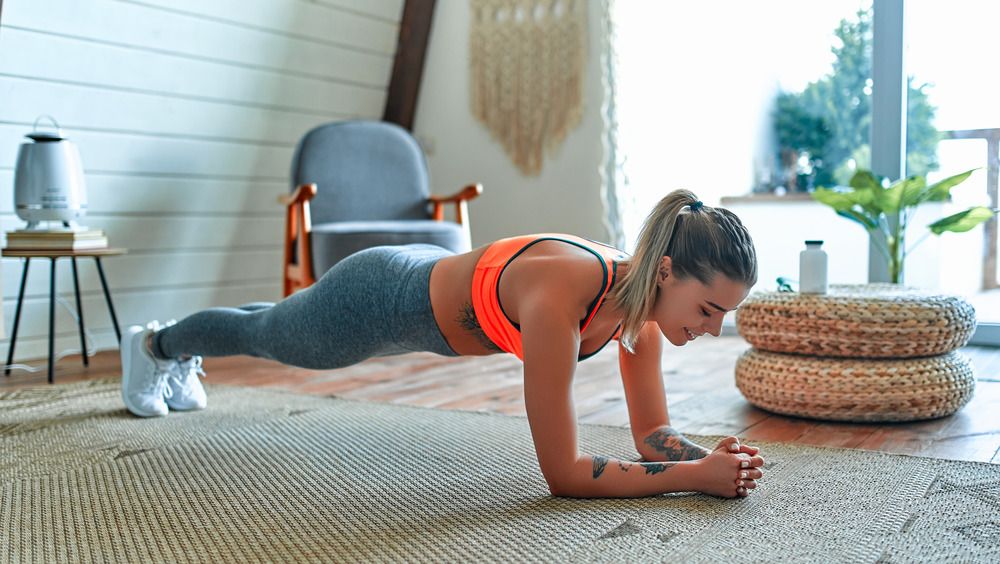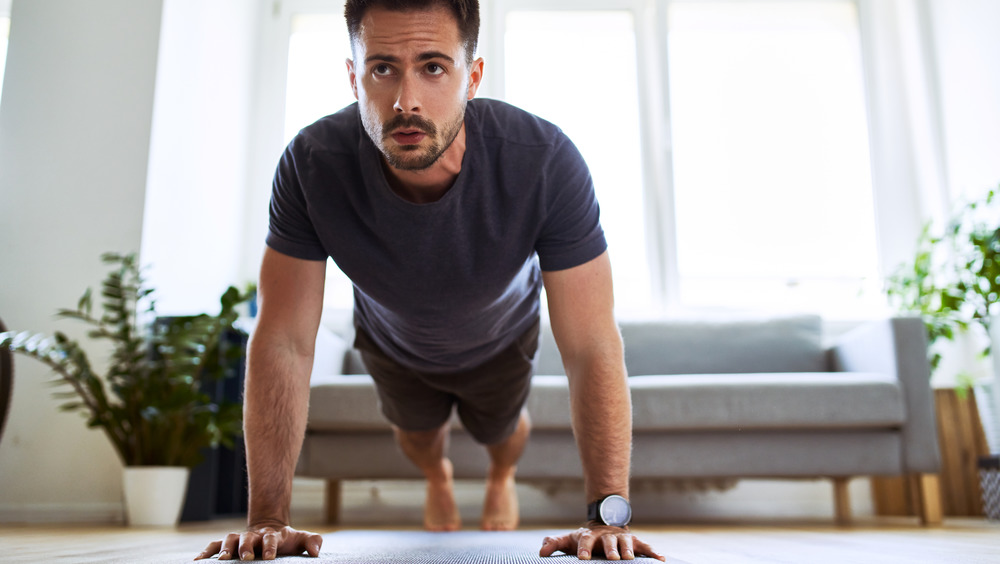Why You Should Start Doing Plank Pushups
If you've already incorporated a plank routine and push-ups into your strength training, you might want to consider combining the two for a plank push-up, a move that works your entire body, challenges your balance and your core strength, while making your upper body do plenty of work.
The movement is simple: You're going from a high-plank position with your arms straight, then lowering one arm at a time down to a forearm plank position, then coming back up to a high plank one arm at a time. This combination exercise challenges your muscles and forces your body to move and adapt in new ways, and you can expect to be sweating after a set (via Well+Good).
By maintaining a proper plank position the entire time — creating a straight line from the crown of your head through your body all the way to your heels— you're working into all of the muscles in your core, from your glutes to your obliques to your abdominals, especially as you lower your arms and come back up to the high plank. Staying stable throughout those movements can be tricky, and requires a lot of core stability. Thanks to the demands on your upper body, you'll also work your chest and triceps as you go (via Built Lean).
Are there any tricks to a plank pushup?
A plank pushup seems pretty straightforward, but remember to switch the arm that you're leading with, either between each rep or after five or ten repetitions of the movement, since the load should be shared evenly between your right and left arms. To add challenge if this is fairly simple, you can add a standard push-up every time you're in the high plank position. To make it easier, you can do the planks from your knees, though remember to focus on maintaining that strong core and stability while doing so (via Class Pass).
While it's a fairly simple move, it requires a lot of focus on form. It might be tempting to let your hips sway as you lower and rise back up, or let your hips drop altogether for some relief for your core, but coming out of that stable plank position makes the move less efficient. You also might notice that your head and neck begin to droop as you go up and down in the plank: Focus on that straight line and looking slightly ahead of your hands to keep your head and neck in a safe, neutral position (via Built Lean).


